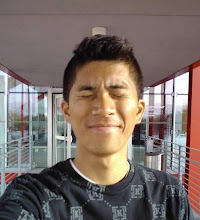You are driving, it doesn't matter if you are driving alone or with another, but you are driving at night. It doesn't exactly matter where you are driving, but you are on an empty road with no one in sight. You approach a red light and stop as you ought to. You can see out in every direction at least fifty feet, more than enough to know that no other cars are approaching and no pedestrians are out and about (maybe it's late in the night, or maybe you really are in the middle of nowhere). As it is a red light and you have come to a full stop, you realize you've been waiting patiently for a light change for about twenty seconds. Still, a red light. No one approaching, no one around. Do you continue to wait for a green light or do you drive on?
This dilemma is posed on the heels of a Los Angeles Times article exploring Governor Schwarzenegger's new budget that greenlights (no pun intended) the possibility of new types of cameras being erected at intersections that not only detect runners of red lights as we've become accustomed to, but those who speed to beat them during yellow lights. And to slap them with $200+ tickets for offenders going 15 mph above the limit ($300+ for those going faster than that). The plan would be to append existing camera sensors throughout the state that detect red light runners, adding up to about 500 in southern California, with these speedster sensors, which lawmakers estimate could bring in up to $340 million through June 2011 to help boost the ailing economy via these estimated 2.4 million unfortunate citizens. Safety is also being asserted as a direct product of the maneuvers.
 Maybe this opens up all new deterrents for drivers to keep on the cautious side of traveling, but does it not also regulate what should normally be circumstantial? Now I know that the law exists to be adhered to, but the law is by no means an absolute system that must always be followed, especially when extreme situations call for their infraction or when they simply make no sense. And speeding, though it's defined by statutes and signs, is relative. When every car on the road is going a reasonable speed but faster than the predetermined speed limit, it seems unreasonable to declare any of them speeding when they're simply moving with traffic. The flow of traffic changes throughout the day and over time as other routes become common knowledge and as landmarks move about, so having to follow an arbitrary, unchanging number is nonsensical. As long as the driver can cross the innermost line of the crosswalk before the light turns red, then to me it's not unlawful, it's simply economical (of course, I don't excuse speed racers hitting 65 in an urban area, but then again that's not a reasonable speed in the first place). Speed is inconsistent, but your relative location to a widely-recognized line and marker on the road is not.
Maybe this opens up all new deterrents for drivers to keep on the cautious side of traveling, but does it not also regulate what should normally be circumstantial? Now I know that the law exists to be adhered to, but the law is by no means an absolute system that must always be followed, especially when extreme situations call for their infraction or when they simply make no sense. And speeding, though it's defined by statutes and signs, is relative. When every car on the road is going a reasonable speed but faster than the predetermined speed limit, it seems unreasonable to declare any of them speeding when they're simply moving with traffic. The flow of traffic changes throughout the day and over time as other routes become common knowledge and as landmarks move about, so having to follow an arbitrary, unchanging number is nonsensical. As long as the driver can cross the innermost line of the crosswalk before the light turns red, then to me it's not unlawful, it's simply economical (of course, I don't excuse speed racers hitting 65 in an urban area, but then again that's not a reasonable speed in the first place). Speed is inconsistent, but your relative location to a widely-recognized line and marker on the road is not. It's like what Foucault said of architecture, what isn't important is how a thing becomes canonized or ordained in law, but how society reacts to them in praxis; speed limits and policies concerning conduct and behavior ought to be judged within their contexts. Otherwise, what has always been mere space is now becoming an atmosphere of surveillance and regulation. We're cutting up our domains into an endless array of adjacent behavioral assessments, via the cold gaze of a camera, and hoping we come away with a passing grade each time.
R.J.M.


No comments:
Post a Comment